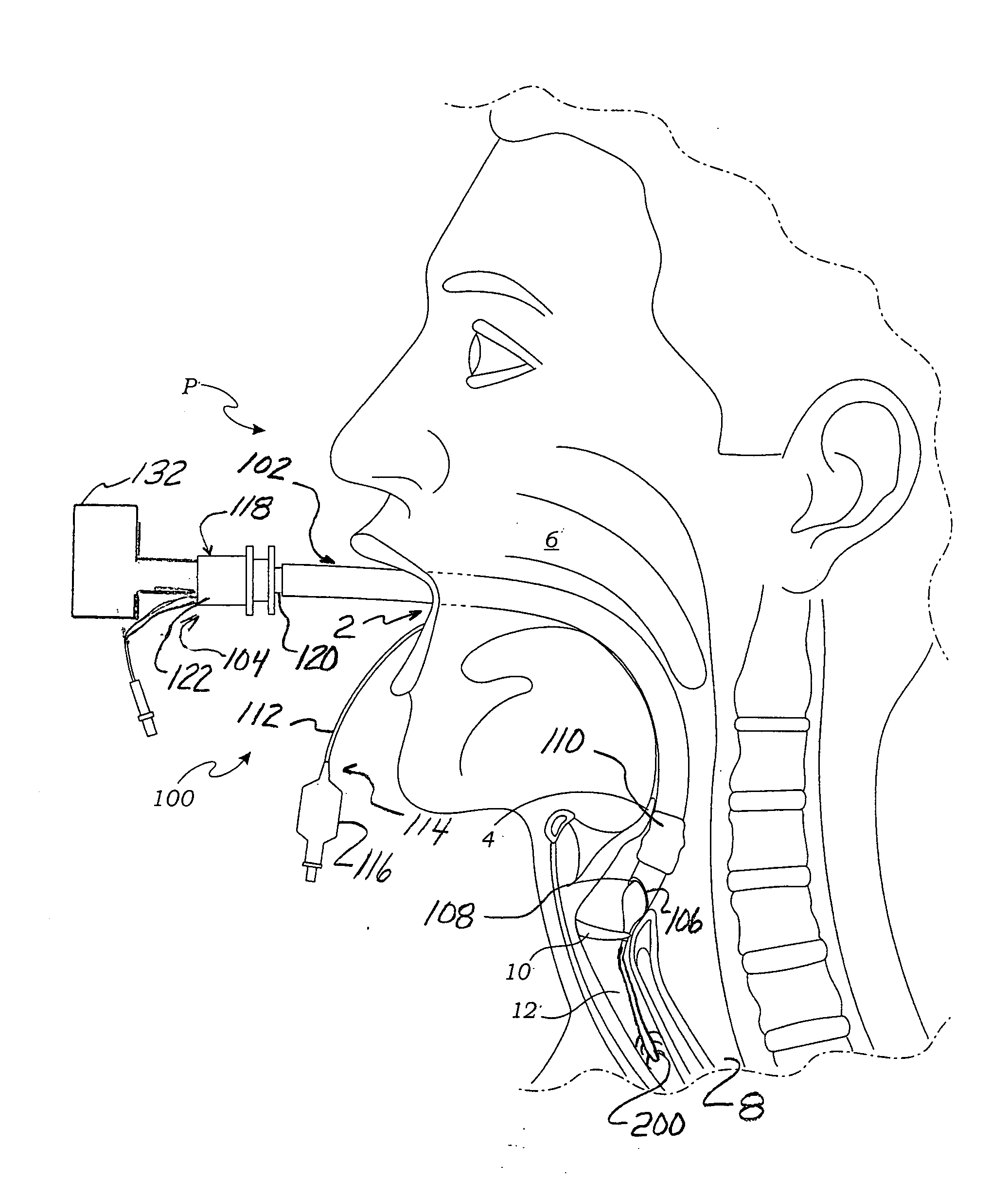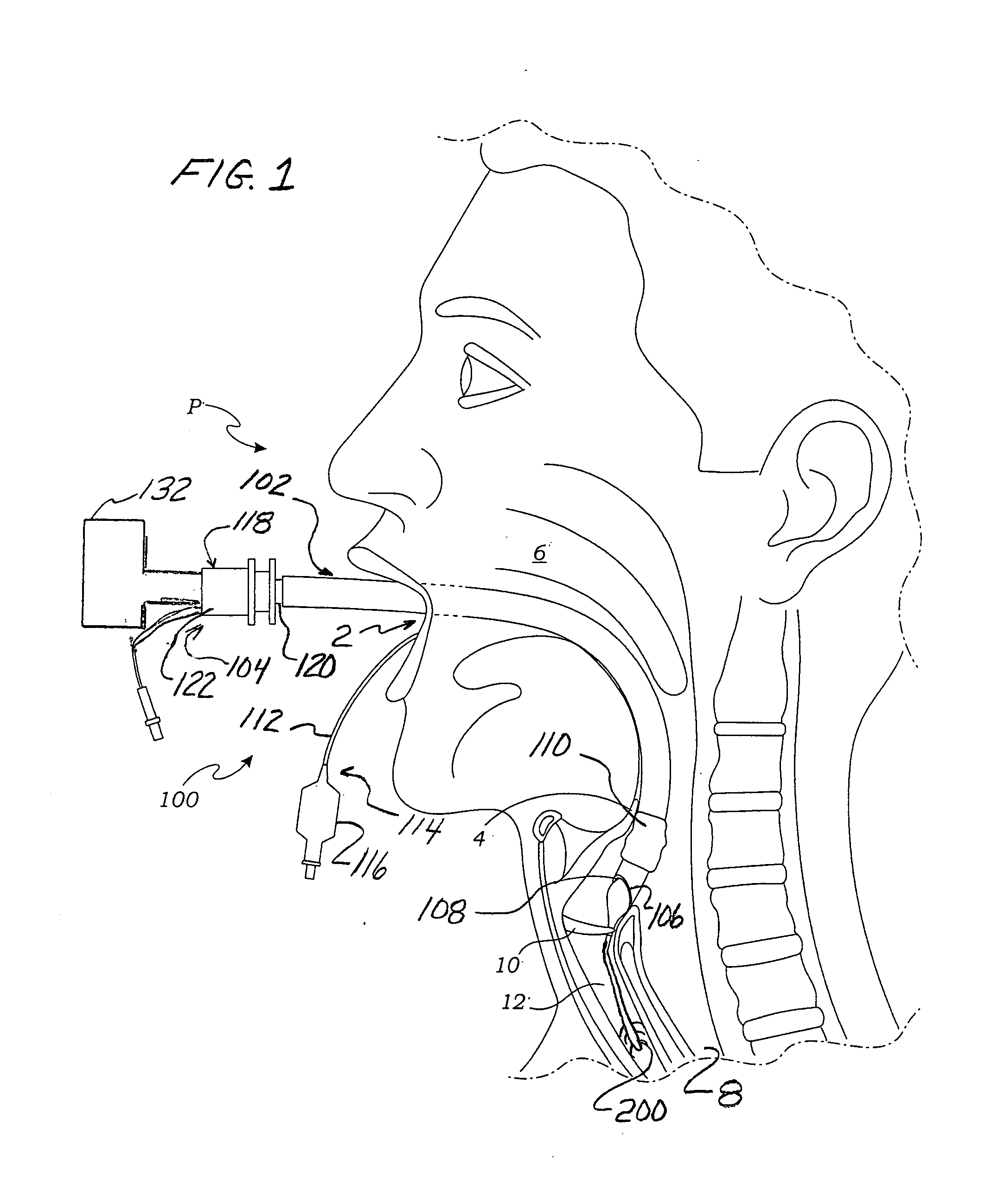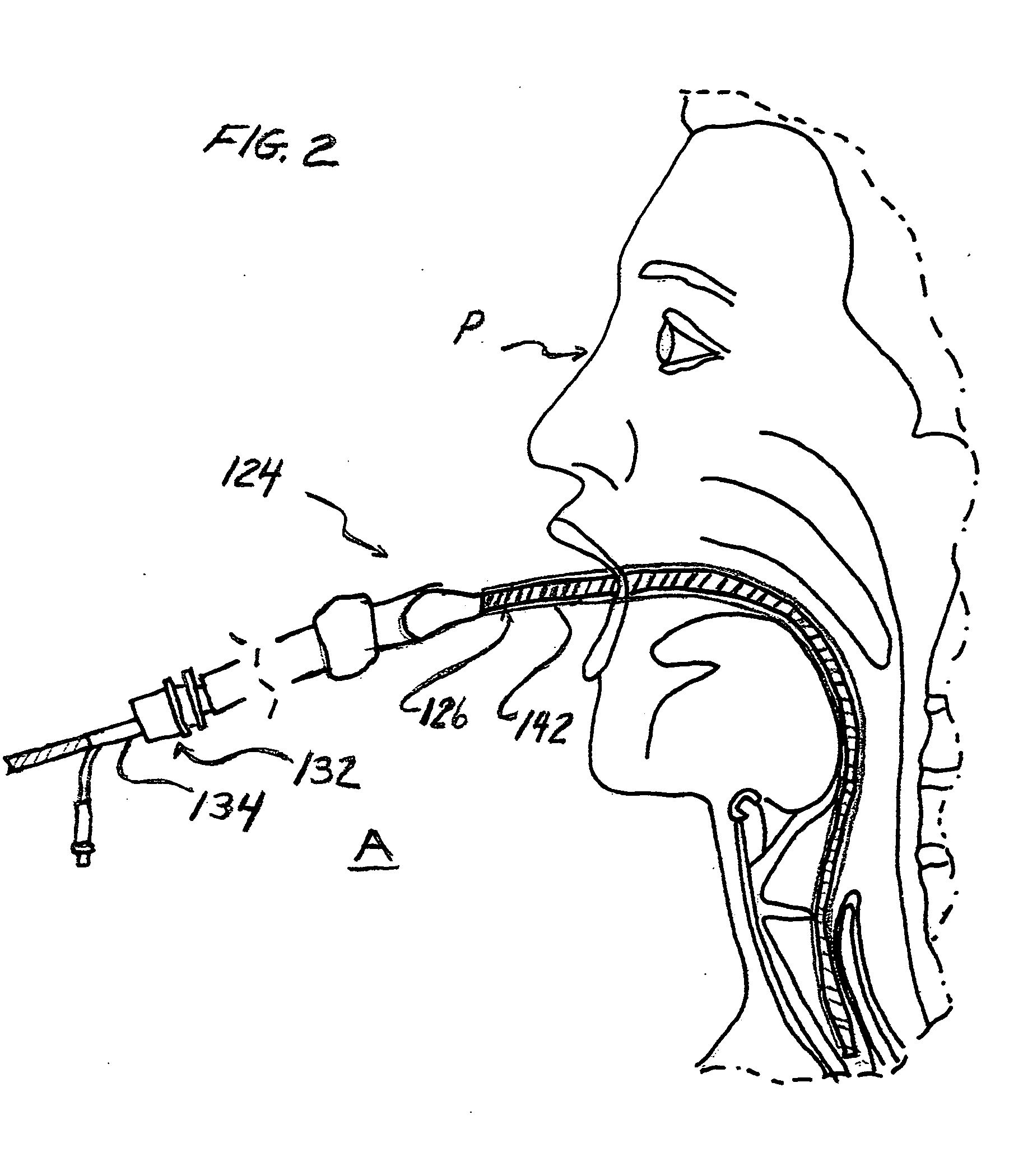Method and device for placing an endotracheal tube
a technology of endotracheal tube and endotracheal tube, which is applied in the field of medical devices, can solve the problems of increasing the risk of ett getting caught on the laryngeal tissue, increasing the likelihood of laryngeal injury, and difficulty in passing the ett into the airway of the patient, so as to improve the patient's safety.
- Summary
- Abstract
- Description
- Claims
- Application Information
AI Technical Summary
Benefits of technology
Problems solved by technology
Method used
Image
Examples
Embodiment Construction
[0019]The present invention relates to a device and method of performing endotracheal intubation and more particularly to a new and novel apparatus and method for placing an ETT or for replacing an ETT that has been placed in a patient. In describing the preferred embodiments of the invention illustrated in the drawings, specific terminology will be resorted to for the sake of clarity. However, the invention is not intended to be limited to the specific terms so selected, and it is to be understood that each specific term includes all technical equivalents that operate in a similar manner to accomplish a similar purpose.
[0020]For purposes of the description of the present invention, the terms “forward” and “forwardly” are intended to refer to the direction towards the patient receiving the intubation device, whereas the terms “rear” and “rearwardly” are intended to refer to the direction away from the patient receiving the intubation device. The term “proximal” refers to a position ...
PUM
 Login to View More
Login to View More Abstract
Description
Claims
Application Information
 Login to View More
Login to View More - R&D
- Intellectual Property
- Life Sciences
- Materials
- Tech Scout
- Unparalleled Data Quality
- Higher Quality Content
- 60% Fewer Hallucinations
Browse by: Latest US Patents, China's latest patents, Technical Efficacy Thesaurus, Application Domain, Technology Topic, Popular Technical Reports.
© 2025 PatSnap. All rights reserved.Legal|Privacy policy|Modern Slavery Act Transparency Statement|Sitemap|About US| Contact US: help@patsnap.com



